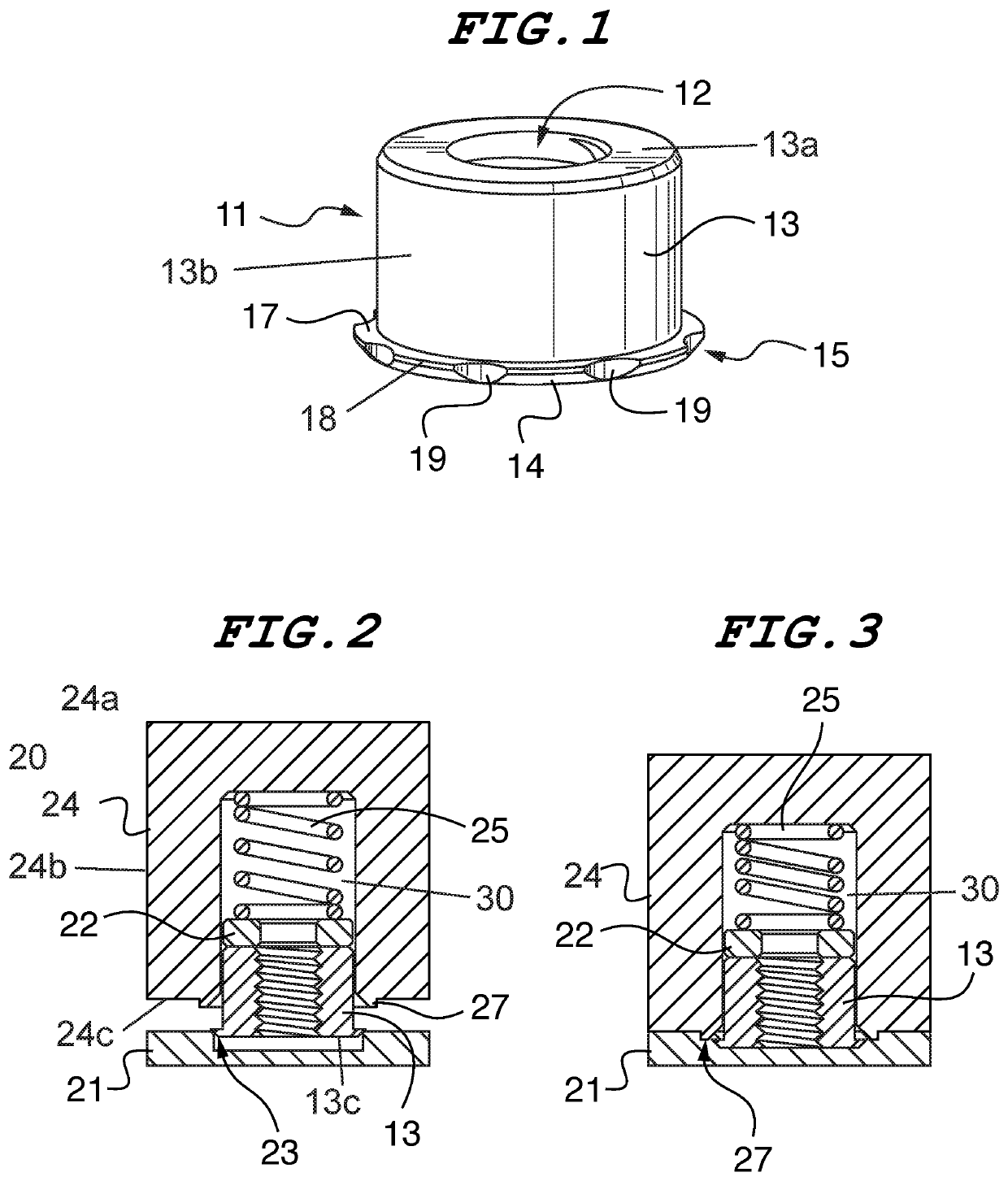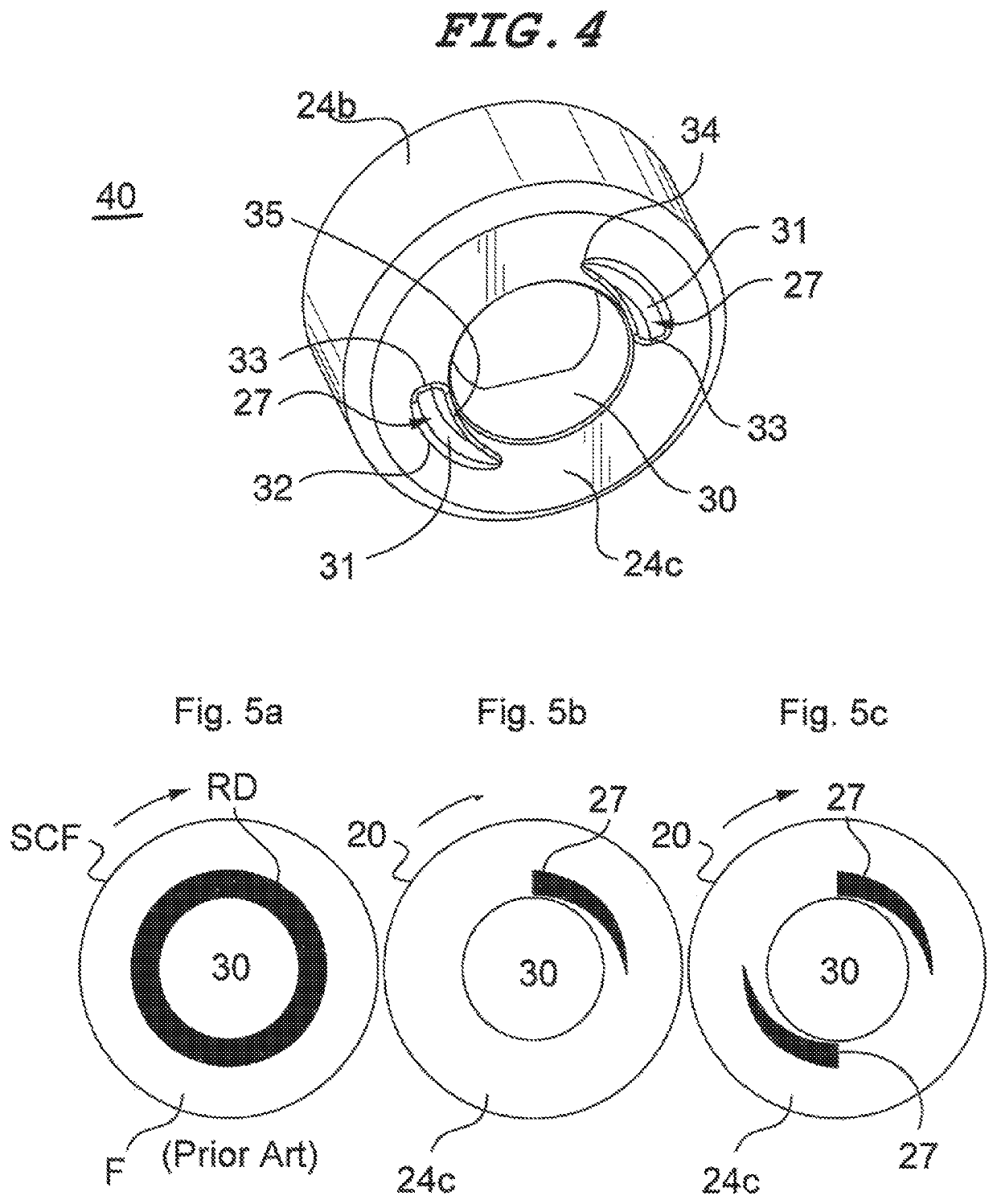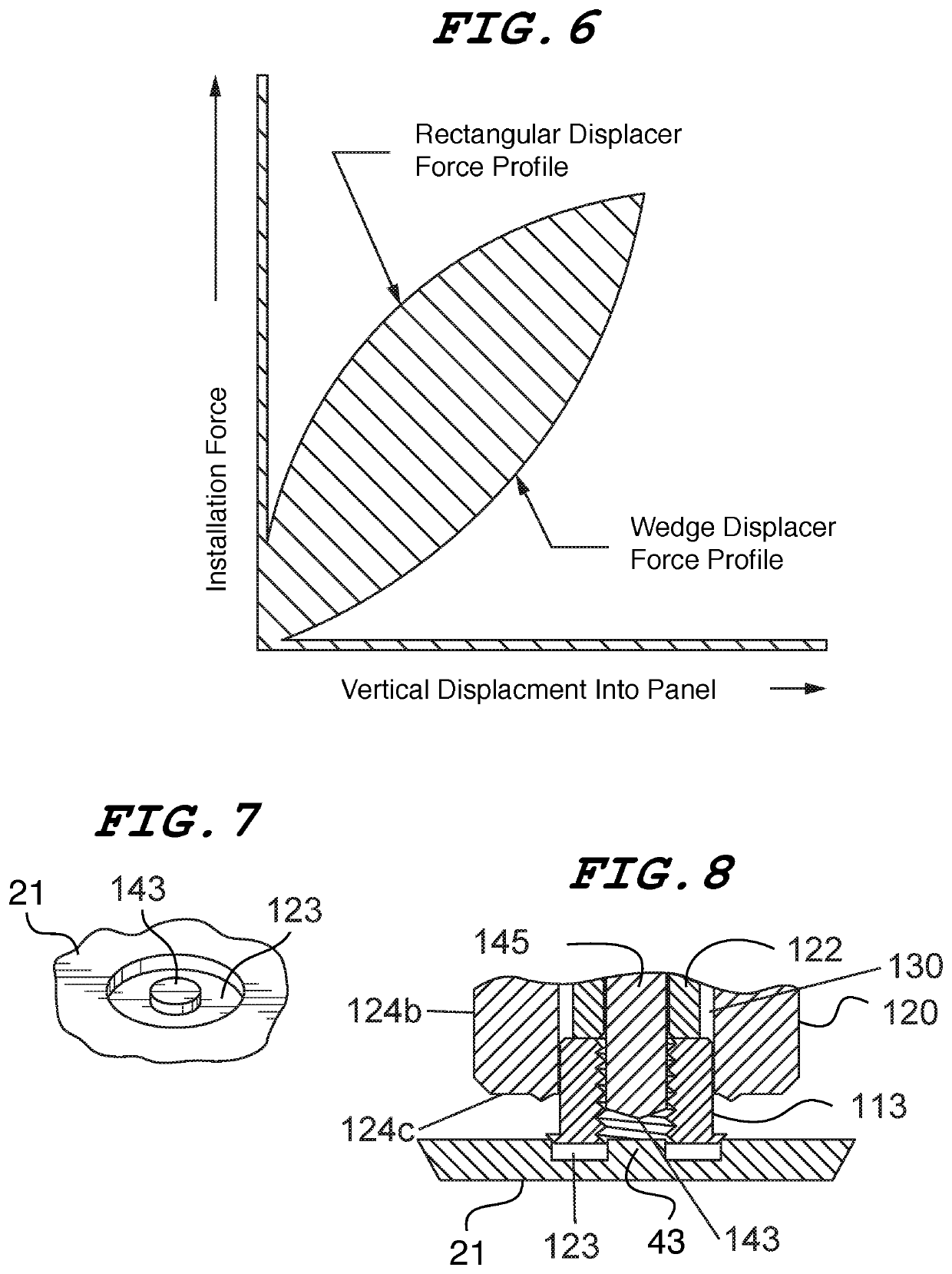Fastener and installation method for very thin sheets
a technology of fasteners and sheets, applied in the direction of threaded fasteners, manufacturing tools, mechanical equipment, etc., can solve the problems of high cost and waste, and many known self-clinching fasteners cannot be installed in relatively thick sheets or components
- Summary
- Abstract
- Description
- Claims
- Application Information
AI Technical Summary
Benefits of technology
Problems solved by technology
Method used
Image
Examples
Embodiment Construction
[0042]“Self-clinching fastener” means any device, usually threaded, that, when pressed into ductile metal, displaces the host material around the mounting hole, causing it to cold flow into a specially designed annular recess in the shank or pilot of the fastener.”“Clinch-in” fastener means any device, usually threaded, that, can be mechanically fastened in a blind receiving hole of a metal workpiece by cold deforming the metal surrounding the hole into contact with the device. “Clinch-in fastening” as used with reference to a fastener and metal workpiece is used in its broadest send to mean the process of joining the fastener to the workpiece (without additional components) using a tool to plastically deform the workpiece into contact with the fastener to form a mechanical interlock between the fastener and the workpiece.
[0043]A fastener in accordance with a preferred embodiment of the invention is shown in FIGS. 1-3 and 6, and is designated generally by reference numeral 11. Refer...
PUM
| Property | Measurement | Unit |
|---|---|---|
| angle | aaaaa | aaaaa |
| perimeter | aaaaa | aaaaa |
| thickness | aaaaa | aaaaa |
Abstract
Description
Claims
Application Information
 Login to View More
Login to View More - R&D
- Intellectual Property
- Life Sciences
- Materials
- Tech Scout
- Unparalleled Data Quality
- Higher Quality Content
- 60% Fewer Hallucinations
Browse by: Latest US Patents, China's latest patents, Technical Efficacy Thesaurus, Application Domain, Technology Topic, Popular Technical Reports.
© 2025 PatSnap. All rights reserved.Legal|Privacy policy|Modern Slavery Act Transparency Statement|Sitemap|About US| Contact US: help@patsnap.com



